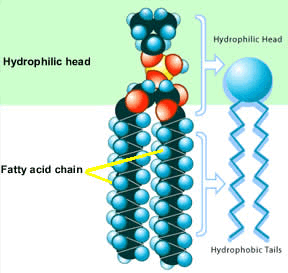To understand why water is so vital to life and why NASA seeks out the presence of water before it searches for life, one needs to first take a look at the busy environment that exists within a living cell.
Observe the video on the right, produced by WEHI, which depicts some of the metabolic processes taking place every second in every cell in our body. Nutrients must be brought into the cell and waste products quickly removed. Now this sounds pretty simple, but without water this would be impossible. Water is a perfect solvent that allows for the rapid movement of nutrients and waste in and out of the cell.
Water's special properties enable it to dissolve nutrients and waste material to create an environment within the cell where small and large proteins, such as enzymes, can move about freely at mild temperatures. All chemical reactions that take place in living organisms rely on the ability reactants particles to move about. Water provides the aqueous environment for mobility of these reactants and so facilitates life sustaining processes.


Water is a very sticky substance and its particles display strong cohesive forces, that is, they will stick together relatively strongly, as well as exhibiting strong adhesive forces, that is, they can stick to most other surfaces.
Click to see a demonstration of these forces.
Why is this important?
This simple and overlooked property of water, strong cohesive and adhesive forces, makes it a very good coolant and an excellent solvent able to dissolve nutrients and carry them hundreds of meters up tall trees through a process known as capillary action.
